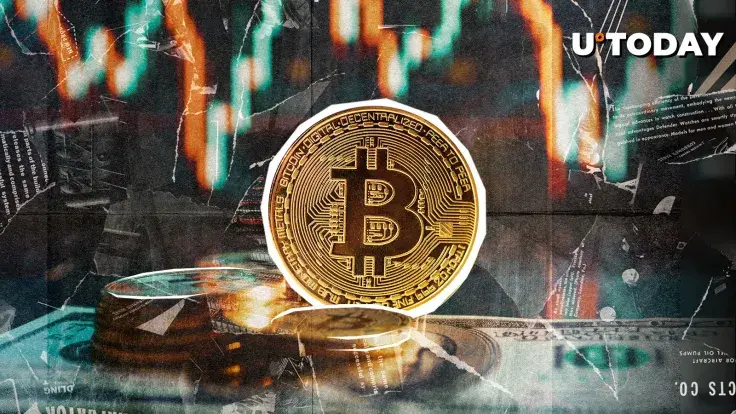
Disclaimer: The opinions expressed by our writers are their own and do not represent the views of U.Today. The financial and market information provided on U.Today is intended for informational purposes only. U.Today is not liable for any financial losses incurred while trading cryptocurrencies. Conduct your own research by contacting financial experts before making any investment decisions. We believe that all content is accurate as of the date of publication, but certain offers mentioned may no longer be available.
The S&P 500 hit a new record high this week, closing above 6,175 as markets shrugged off some mixed economic signals. But Bitcoin, which usually tracks equity momentum closely, did not follow this time. Instead, it slipped lower throughout the day, showing a clear split.
The latest Core PCE data showed inflation rising 0.2% month-on-month, slightly above April's figure. Real disposable income dropped 0.7%, and real consumption fell 0.3% — signs that people's spending power is weakening.
Even so, the stock market did well, with growth in tech, industry and retail. That would usually be good for Bitcoin, but it was not today.

What makes the difference is the way it is set up. Spot interest in BTC remained soft, but futures volumes went through the roof, so it looks like the recent rise might have been more about positional play than real conviction.
According to the latest Binance data, there was a spike in sell activity just before the inflation release.
The result is a market where equities are on the rise due to policy optimism, while Bitcoin is moving sideways to lower with rising leverage risk. If BTC keeps on moving away from the S&P 500, traders might have to rethink how they think about crypto and risk assets being connected. For now, the decoupling is real, but it is too early to say if it is a new trend or a short-term hiccup.


 Tomiwabold Olajide
Tomiwabold Olajide Vladislav Sopov
Vladislav Sopov Caroline Amosun
Caroline Amosun